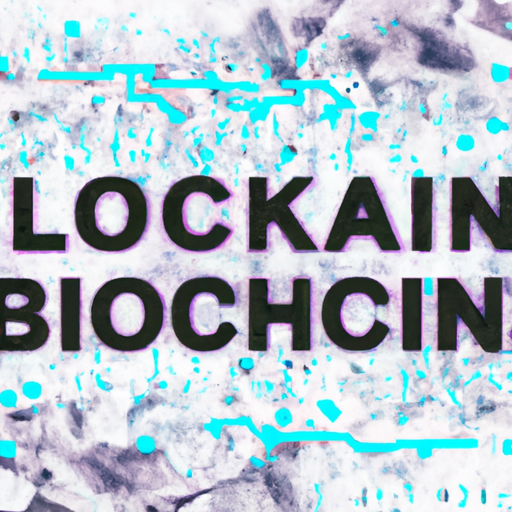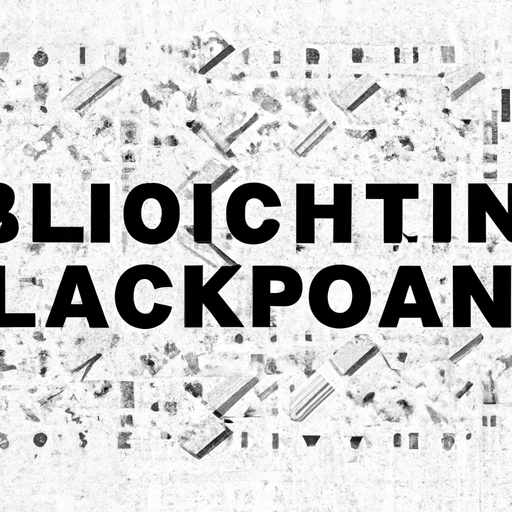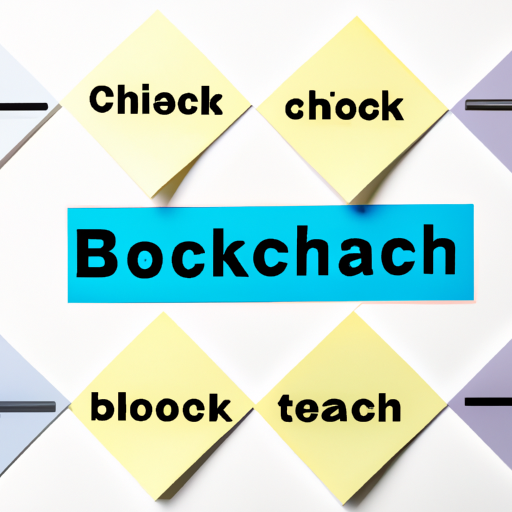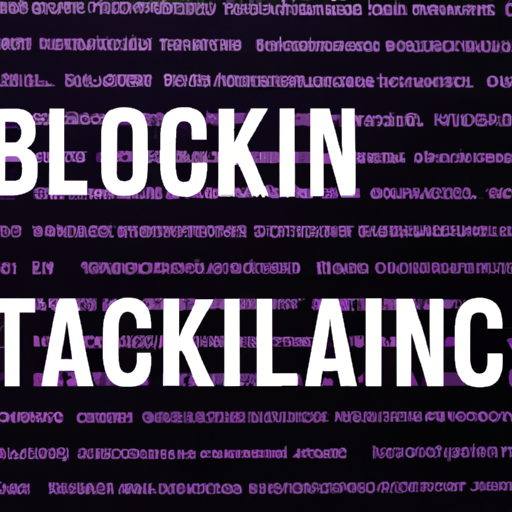- Introduction to Blockchain Technology
- Understanding the Basics of Blockchain
- Key Components of Blockchain Technology
- Different Types of Blockchain
- Benefits and Applications of Blockchain
- Challenges and Future Outlook of Blockchain
Introduction to Blockchain Technology

Blockchain technology is a revolutionary concept that has gained significant attention in recent years. It is a type of distributed ledger technology (DLT) that enables the secure and transparent recording of transactions across multiple computers or nodes. Unlike traditional centralized systems, where a single entity controls and manages the entire database, blockchain technology operates on a decentralized network.
The fundamental building block of a blockchain is a block, which contains a group of transactions. Each block is linked to the previous block through a cryptographic hash function, forming a chain of blocks. This ensures the immutability and integrity of the data stored on the blockchain. The distributed nature of the blockchain ensures that no single entity can tamper with the data, making it highly secure and resistant to hacking.
One of the key features of blockchain technology is the use of smart contracts. Smart contracts are self-executing contracts with the terms and conditions directly written into code. They automatically execute and enforce the terms of the contract, eliminating the need for intermediaries and reducing transaction costs. Smart contracts have a wide range of applications, from financial transactions to supply chain management.
In order to ensure the validity and integrity of the data on the blockchain, consensus algorithms are used. Consensus algorithms are mechanisms that enable nodes on the network to agree on the state of the blockchain. These algorithms ensure that all nodes reach a consensus on the validity of transactions and the order in which they are added to the blockchain. There are various consensus algorithms, such as Proof of Work (PoW) and Proof of Stake (PoS), each with its own advantages and disadvantages.
Understanding the Basics of Blockchain

Blockchain technology is a revolutionary concept that has gained significant attention in recent years. At its core, blockchain is a type of distributed ledger that allows multiple parties to have access to the same information in a secure and transparent manner. This technology has the potential to transform various industries, including finance, supply chain management, and healthcare.
One of the key components of blockchain technology is the use of smart contracts. Smart contracts are self-executing contracts with predefined rules and conditions. They are stored on the blockchain and automatically execute when the specified conditions are met. This eliminates the need for intermediaries and ensures that transactions are carried out efficiently and without any human intervention.
Another important aspect of blockchain technology is the use of consensus algorithms. Consensus algorithms are mechanisms that enable multiple participants in the network to agree on the state of the blockchain. These algorithms ensure that all participants reach a consensus on the validity of transactions and prevent any fraudulent activity. Examples of consensus algorithms include Proof of Work (PoW) and Proof of Stake (PoS).
Overall, blockchain technology offers a decentralized and secure way of recording and verifying transactions. It provides transparency, immutability, and trust in a digital environment. As this technology continues to advance, it holds the potential to revolutionize various industries and reshape the way we conduct business.
Key Components of Blockchain Technology

Blockchain technology is comprised of several key components that work together to provide its unique features and capabilities. These components include:
- Distributed Ledger: At the core of blockchain technology is a distributed ledger, which is a decentralized database that records all transactions and data across a network of computers. This ledger is shared and synchronized among all participants, ensuring transparency and immutability of the data.
- Smart Contracts: Smart contracts are self-executing contracts with the terms of the agreement directly written into the code. These contracts automatically execute actions and transactions when predefined conditions are met, eliminating the need for intermediaries and enhancing efficiency.
- Consensus Algorithms: Consensus algorithms are used to validate and agree on the state of the blockchain across all participants. These algorithms ensure that all nodes in the network reach a consensus on the validity of transactions and the order in which they are added to the blockchain.
By combining these key components, blockchain technology enables secure, transparent, and efficient peer-to-peer transactions and data sharing. It eliminates the need for intermediaries, reduces costs, and provides a high level of trust and integrity in digital transactions.
Different Types of Blockchain

There are different types of blockchain that vary in terms of their design and functionality. These variations are mainly due to the different use cases and requirements of organizations. In this section, we will explore some of the commonly known types of blockchain:
- Public Blockchain: This type of blockchain is open to anyone who wants to participate. It is a decentralized and distributed ledger that allows anyone to join the network, validate transactions, and maintain a copy of the entire blockchain. Public blockchains, such as Bitcoin and Ethereum, rely on consensus algorithms to achieve agreement on the state of the ledger.
- Private Blockchain: In contrast to public blockchains, private blockchains are restricted to a specific group of participants. These participants are usually known and trusted entities, such as organizations or consortiums. Private blockchains provide enhanced privacy and control over the network, making them suitable for enterprise applications. Access to the blockchain is typically permissioned, meaning only authorized entities can participate in the network.
- Consortium Blockchain: Consortium blockchains can be seen as a hybrid between public and private blockchains. They are governed by a group of organizations that collaborate to maintain the blockchain network. Consortium blockchains offer a balance between decentralization and control. The consortium members jointly validate transactions and make decisions regarding the consensus algorithm and governance rules.
- Hybrid Blockchain: Hybrid blockchains combine elements of both public and private blockchains. They allow for the interoperability of different blockchains by establishing a connection between them. Hybrid blockchains enable the transfer of assets and information between different networks, providing flexibility and scalability.
- Smart Contract Blockchain: Smart contract blockchains, such as Ethereum, are designed to execute self-executing contracts. Smart contracts are programmable agreements that automatically execute predefined conditions when certain criteria are met. These blockchains enable the creation and execution of decentralized applications (dApps) and provide developers with a platform to build and deploy smart contracts.
Each type of blockchain has its own advantages and disadvantages, making them suitable for specific use cases. Understanding the different types of blockchain is crucial in determining the most appropriate solution for a particular application or organization.
Benefits and Applications of Blockchain

Blockchain technology offers numerous benefits and has diverse applications across various industries. Its key characteristic is its ability to create a secure and transparent distributed ledger, which eliminates the need for intermediaries and enhances trust among participants. Here are some of the major benefits and applications of blockchain:
1. Enhanced Security: Blockchain technology ensures the security of data by using cryptographic algorithms. Each transaction within a block is encrypted, making it nearly impossible to alter or tamper with the information stored on the blockchain.
2. Transparency and Accountability: With blockchain, all transactions are recorded and stored in a shared ledger visible to all participants. This transparency and accountability reduce fraud and increase trust among stakeholders.
3. Decentralization: Blockchain operates on a decentralized network, meaning no single entity has control over the data. This distributed nature of blockchain makes it resistant to censorship, hacking, and other malicious activities.
4. Efficiency and Cost Savings: By eliminating intermediaries and streamlining processes, blockchain technology can significantly reduce transaction costs and increase operational efficiency. It allows for faster settlement times and automates complex tasks.
5. Smart Contracts: Blockchain enables the execution of smart contracts, which are self-executing agreements with the terms of the contract directly written into code. These contracts automatically trigger actions once predefined conditions are met, reducing the need for manual intervention.
6. Supply Chain Management: Blockchain can be used to track and trace products throughout the supply chain, ensuring transparency and authenticity. It provides real-time visibility into the movement of goods, reducing fraud and counterfeiting.
7. Financial Services: Blockchain technology has significant applications in the financial sector. It can facilitate secure and faster cross-border payments, simplify the process of issuing and trading securities, and enable more efficient identity verification processes.
8. Consensus Algorithms: Blockchain relies on consensus algorithms to validate transactions and maintain the integrity of the network. Different consensus algorithms, such as Proof of Work (PoW) and Proof of Stake (PoS), ensure that all participants agree on the state of the blockchain.
In conclusion, blockchain technology offers a wide range of benefits and applications across industries. Its ability to provide enhanced security, transparency, decentralization, and efficiency makes it a promising solution for various use cases.
Challenges and Future Outlook of Blockchain

Blockchain technology has gained significant attention in recent years due to its potential to revolutionize various industries. However, like any emerging technology, it faces several challenges and uncertainties that need to be addressed for its widespread adoption and utilization.
One of the primary challenges of blockchain technology is scalability. As the number of transactions and users increases, the distributed ledger becomes larger and more complex, resulting in slower transaction times and increased storage requirements. Scalability solutions such as sharding and off-chain transactions are being explored to overcome this challenge.
Another challenge lies in the security of smart contracts. While smart contracts enable self-executing and irreversible agreements, they are not immune to vulnerabilities. Flaws in the code or malicious actors can exploit these vulnerabilities, leading to potential financial losses. Continuous auditing and code reviews are essential to ensure the robustness and security of smart contracts.
Interoperability is also a significant challenge for blockchain technology. As numerous blockchain platforms and protocols emerge, there is a lack of standardized communication and compatibility between them. Interoperability solutions such as cross-chain communication protocols and interoperability frameworks are being developed to enable seamless interaction between different blockchain networks.
Consensus algorithms, which determine how consensus is reached in a blockchain network, also pose challenges. Traditional consensus algorithms like Proof of Work (PoW) consume substantial amounts of energy and have scalability limitations. New consensus algorithms such as Proof of Stake (PoS) and Delegated Proof of Stake (DPoS) are being proposed and implemented to address these issues.
Looking towards the future, blockchain technology holds immense potential. It has the capability to transform industries like finance, supply chain, healthcare, and more. With advancements in scalability, security, and interoperability, blockchain technology can become a cornerstone of the digital economy, enabling secure and transparent transactions across borders.

7 Replies to “Decoding Blockchain Technology”
I found blockchain technology fascinating when I first learned about it. It’s amazing how it can revolutionize industries and provide secure and transparent transactions. I’d love to read more about its practical applications and real-world examples.
I’ve been involved in the cryptocurrency space for years, and blockchain is the backbone of it all. Its decentralized nature and immutability are what make it so powerful. I’d like to know more about potential future developments and scalability issues.
I’ve been trying to understand blockchain technology, but the concept of consensus algorithms and smart contracts is still a bit confusing to me. Can someone explain these in simpler terms?
Blockchain has the potential to disrupt traditional finance and even voting systems. I’m curious about the security measures in place to prevent hacking and fraud within the blockchain network.
I’ve heard about blockchain being used in supply chain management. It’s intriguing how it can improve transparency and traceability. I wonder if there are any drawbacks to its implementation in this area.
I work in the tech industry, and blockchain is a hot topic. I’m keen to learn more about the energy consumption associated with blockchain and if there are any sustainable solutions being explored.
I’m constantly exploring new blockchain projects, and the potential for interoperability between different blockchains is something that piques my interest. Are there any ongoing efforts to achieve this?